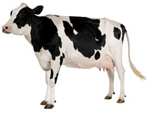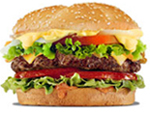
Liana Werner-Gray
I want to start this post by introducing a young friend who recently moved to New York from Australia. Her blog often features topics similar to mine. Our belief sets sometimes differ markedly, but overlap much more often than I would have initially thought. Let me know what you think about her comments on MSG.
Liana Werner-GrayWerner-Gray was born in Perth, Western Australia in 1987, but grew up mostly in Alice Springs in Australia's Northern Territory. She attended Charles Darwin University in Alice Springs before relocating to New York City where she currently resides. She is the creator of "The Earth Diet", a diet plan she designed following her Miss Earth Australia 2009 People's Choice win. With the environment in mind and health of the world population, she pursued the idea of eating only foods that nature intended for 365 days. Werner-Gray started a daily online blog to share her journey with the world. She began the diet on Saturday, October 24, 2009. She also developed "I Love Earth", a program designed to help children reduce their carbon footprint.Here's a link to Liana's blog and then I'll paste in her recent post on MSG.Thoughts: How is MSG manufactured?
This blog is thanks to Truth In Labeling. Processed free glutamic acid (MSG) is created when protein is either partially or fully broken apart into its constituent amino acids, or glutamic acid is secreted from selected bacteria. A protein can be broken into its constituent amino acids in a number of ways (autolysis, hydrolysis, enzymolysis, and/or fermentation). In general, these processes are referred to as "hydrolyzation" of protein. When a protein is hydrolyzed, the amino acid chains in the protein are broken, and individual amino acids are freed. Acids, enzymes, and/or fermentation processes are used to hydrolyze protein. These processes are discussed in some detail in food encyclopedias -- wherein articles on glutamic acid and "monosodium glutamate" are generally written by persons who work for Ajinomoto, Co., Inc., the world's largest producer of the food ingredient "monosodium glutamate."
Today, the glutamic acid component of the food additive "monosodium glutamate" is generally made by bacterial or microbial fermentation wherein bacteria used are often, if not always, genetically engineered. In this method, bacteria are grown aerobically in a liquid nutrient medium. The bacteria have the ability to excrete glutamic acid they synthesize outside of their cell membrane into the liquid nutrient medium in which they are grown. The glutamic acid is then separated from the fermentation broth by filtration, concentration, acidification, and crystallization, and, through the addition of sodium, converted to its monosodium salt.
According to The Encyclopedia of Common Natural Ingredients:
"Monosodium glutamate can generally be produced by three methods: (1) hydrolysis of proteins such as gluten or proteins present in sugar beet wastes, (2) synthesis, and (3) microbial fermentation. In the hydrolysis method, the protein is hydrolyzed with a strong mineral acid to free amino acids, and the glutamic acid is then separated from the mixture, purified, and converted to its monosodium salt, [monosodium glutamate]. This used to be the major method of [monosodium glutamate] manufacture. Currently most of the world production of [monosodium glutamate] is by bacterial fermentation. In this method bacteria (especially strains of Micrococcus glutamicus) are grown aerobically in a liquid nutrient medium containing a carbon source (e.g., dextrose or citrate), a nitrogen source such as ammonium ions or urea, and mineral ions and growth factors. The bacteria selected for this process have the ability to excrete glutamic acid they synthesize outside of their cell membrane into the medium and accumulate there. The glutamic acid is separated from the fermentation broth by filtration, concentration, acidification, and crystallization, followed by conversion to its monosodium salt [monosodium glutamate]." (Leung, A. and Foster, S. Encyclopedia of Common Natural Ingredients Used in Food, Drugs , and Cosmetics. New York: Wiley, 1996. pp 373-375.)
Creating processed free glutamic acid (MSG) by bacterial fermentation is not openly discussed by the glutamate industry, and it is not generally discussed in detail in food encyclopedias. It seems strange to us that when Ajinomoto discusses the way in which "monosodium glutamate" is manufactured, they talk about it being made from beets, corn, or some other crop, instead of describing their use of bacteria (which may be genetically engineered) and their process of bacterial fermentation.
It used to be that when any ingredient contained 78%-79% processed free glutamic acid (MSG), and the balance was made up of salt, moisture, and up to 1 per cent impurities, the product had to be called "monosodium glutamate" and had to be labeled as such. The FDA required that other MSG-containing ingredients be identified by names other than "monosodium glutamate." Never has the FDA required mention of the fact that an ingredient contains processed free glutamic acid (MSG). Presently, the FDA refers to the 6th edition of the Food Chemical Codex for their definition of "monosodium glutamate."
While the glutamic acid in "monosodium glutamate" is generally produced through bacterial fermentation, the glutamic acid in the other MSG-containing ingredients is made through use of chemicals (hydrolysis or autolysis), enzymes (enzymolysis), fermentation, or a complex cooking process wherein reaction flavors are produced from a combination of specific amino acids, reducing sugars, animal or vegetable fats or oils, and optional ingredients including hydrolyzed vegetable protein.
In acid hydrolysis, crude gluten or other proteinaceous starting materials are generally hydrolyzed by heating with hydrochloric acid. The chemical hydrolysis with hydrochloric acid is said to be efficient, but almost any organic substance in the raw material is hydrolyzed, resulting in desired reactions such as hydrolysis of proteins, carbohydrates, fats (triglycerides), and the unwanted formation of mono and dichloro propanols, which are carcinogenic. The FDA has admitted, and even pretended to address the fact, that processed free glutamic acid created by acid hydrolysis contains carcinogenic mono and dichloro propanol ( Food Chemical News, December 2, 1996. Pp.24-25).
The FDA has also admitted that processed free glutamic acid found in reaction flavors which are produced from a combination of specific amino acids, reducing sugars, and animal or vegetable fats or oils, and optional ingredients including hydrolyzed vegetable protein is also carcinogenic (Lin, L.J. Regulatory status of Maillard reaction flavors. Division of Food and Color Additives, Center for Food Safety and Applied Nutrition, FDA. August 24, 1992; Food Chemical News. May 31, 1993, p 16).
Processed free glutamic acid (MSG) carries with it material not found with unprocessed glutamic acid. Unprocessed glutamic acid in higher organisms is L-glutamic acid, only. Processed free glutamic acid (MSG) is both L-glutamic acid and D-glutamic acid, and is accompanied by pyroglutamic acid and other impurities. The impurities differ according to the materials and methods used to produce the glutamic acid. Under certain circumstances, processed free glutamic acid is accompanied by mono and dichloro propanols (which are carcinogenic) or heterocyclic amines (which are also carcinogenic).
By FDA definition, processed free glutamic acid (MSG) is "naturally occurring," because the basic ingredient is found in nature. "Naturally occurring" does not mean that a food additive is being used in its natural state. "Naturally occurring" only means that the food additive began with something found in nature. By FDA definition, the ingredient "monosodium glutamate" is natural. So is hydrochloric acid. So is arsenic. "Natural" doesn't mean "safe."
There are a number of straightforward bold faced lies used by the glutamate industry in defending its contention that exposure to free glutamic acid found in processed food does not cause adverse reactions including hives, asthma, seizures, and migraine headache; could not possibly cause brain damage, learning disorders, or endocrine disturbances; and could not possibly be relevant to diverse diseases of the central nervous system such as addiction, stroke, epilepsy, schizophrenia, anxiety, depression, and degenerative disorders such as ALS, Parkinson's disease, and Alzheimer's disease. Central to their argument is the lie that the processed free glutamic acid used in processed food is identical to the glutamic acid found in unprocessed, unadulterated food and in the human body.
Source: Truth In Labeling








